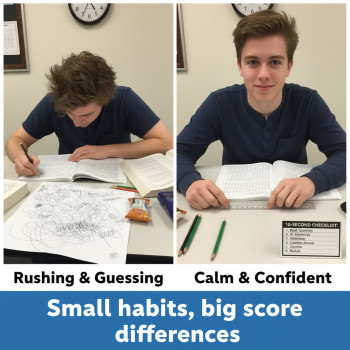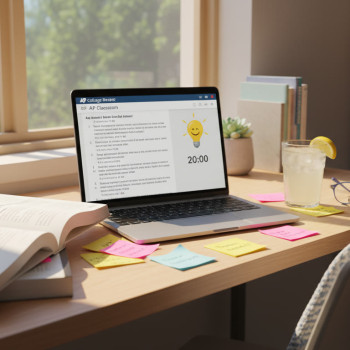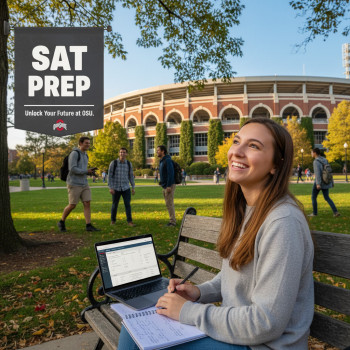Understanding Harvard’s SAT Expectations in 2025: What Families Need to Know
If you’re a student aiming for Harvard, or a parent helping one, the college application journey can feel equal parts thrilling and bewildering. Amid grades, activities, essays, and recommendations, the SAT often sits front and center — or quietly in the background — depending on institutional policy and the year. As of the current admissions landscape, Harvard considers SAT scores as part of a holistic review. That means your test results are important but far from the only factor. Let’s unpack what that really means for students preparing for the Digital SAT and how to create a practical plan that fits your life, goals, and timeline.

Why the SAT still matters for Harvard
Harvard reviews each application holistically: academic record, course rigor, recommendations, extracurricular impact, personal essays, and standardized test scores. For many selective colleges, SAT scores offer a standardized metric that helps admissions officers compare applicants from diverse schools and contexts. A strong SAT score can confirm academic readiness and sometimes tilt a close decision in your favor — especially when other elements of the file are strong.
Test policy snapshot — the practical takeaway
Policies evolve, and colleges periodically update whether they require, recommend, or allow test-optional submissions. For applicants to Harvard, the practical approach is simple:
- Assume scores can be considered and may strengthen a competitive profile.
- If your practice or official Digital SAT scores are near top ranges, submit them.
- If your scores are well below the averages of admitted students and you have compelling alternatives (exceptional curricular rigor, outstanding achievements, or significant context), you can weigh the choice not to submit.
Ultimately, the best choice is the one that strengthens your overall application. A low score that raises doubt won’t help; a high score can be a clear asset.
What a ‘competitive’ SAT score looks like for Harvard
Harvard admits students who perform at the top of their cohorts. While exact numbers change year to year, aim for scores that align with the upper percentiles to maximize competitiveness. The Digital SAT uses a 1600 scale similar to the traditional SAT, and many successful Harvard applicants score in the top 1–2% nationally.
| Score Range | How Admissions Typically Views It |
|---|---|
| 1510–1600 | Extremely strong — places you among the most competitive applicants; reinforces academic readiness. |
| 1450–1509 | Very competitive — strong; combined with high GPA and rigor, this is a compelling score. |
| 1380–1449 | Competitive but may require stronger supporting elements (essays, recommendations, extracurriculars). |
| Below 1380 | Still possible for admission in exceptional cases; consider retaking or strengthening other parts of the application. |
Remember: numbers aren’t destiny. They’re one part of a larger narrative. If you’re below these ranges, you can still build an outstanding application through academic upward trends, meaningful leadership, and unique contributions. If you’re above them, don’t rely on the score alone — Harvard looks for intellectual curiosity, character, and fit.
How the Digital SAT differs — and why that matters
The Digital SAT introduced changes designed to better reflect real-world reading, evidence analysis, and problem-solving — while being shorter and delivered on a secure device. Key practical differences for test prep:
- Adaptive sections mean performance on the first module can influence the difficulty level of later sections, so pacing and accuracy on early questions matter.
- Digital format requires comfort with on-screen reading, annotating passages digitally, and using the test device’s tools (highlighting, flagging questions).
- Content is still aligned to the same 1600 scale and assesses similar skills, but practice must include digital test conditions for best results.
Prep tips for the Digital SAT
- Practice on a tablet or laptop that mimics the test interface; simulate test timing and breaks.
- Focus on first-module performance: build strategies to prevent early mistakes that could alter later difficulty.
- Use official practice material — the format and types of questions matter more now than ever.
- Incorporate regular timed practice, review mistakes deeply, and track progress by sub-skill (e.g., algebra, command of evidence, data interpretation).
Strategic timeline: When to take the Digital SAT
Plan backward from your college application deadlines. A sensible schedule might look like this for a typical high school senior:
- Junior year spring: take a baseline practice test (Digital SAT full-length). Identify target score and weak areas.
- Junior year summer/fall: focused prep and at least one official Digital SAT administration.
- Senior year fall: final official test(s) if you’re refining your score; submit your best official score to colleges.
Why this matters: you want sufficient time after a test to analyze results, target weak areas, and retake if needed before application deadlines (most regular decisions have January 1 deadlines, with early decisions in November). Avoid last-minute testing if possible; scores take time to send, and stressful cramming rarely yields a reliable jump.
How to decide whether to submit scores
Deciding to submit or withhold your SAT scores is a strategic choice. Consider these questions:
- Are your scores within or above the competitive ranges for Harvard? If yes, submit.
- Do your scores contradict a stronger academic record (e.g., stellar GPA and advanced coursework)? If yes, consider retaking or providing additional context.
- Can you demonstrate excellence elsewhere (research, national awards, exceptional essays) that outweigh a lower score? If yes, evaluate carefully with a counselor.
Tip: Many students benefit from an honest score-review session with a test-prep tutor or counselor. Sparkl’s personalized tutoring — with 1-on-1 guidance, tailored study plans, and expert tutors — can help families weigh the pros and cons and make a data-driven choice that complements the rest of the application.
How admissions uses SAT scores in a holistic review
Harvard’s holistic review means officers evaluate context: a student’s high school opportunities, family background, and personal story. SAT scores are used to understand academic preparation, but they’re not the only signal. Here are three ways officers commonly use scores:
- Contextual comparison across applicants from different schools and curricula.
- Confirmation of academic readiness for rigorous coursework.
- Supplementary evidence when other metrics are inconclusive.
Because context matters, a lower score from a student in an under-resourced environment may be interpreted differently than the same score from a student with abundant test-prep opportunities. If you have contextual factors (medical, family responsibilities, school disruptions), your application should explain them through the appropriate channels.
What to do if your score is lower than expected
There are practical steps you can take to strengthen your chances:
- Retake the Digital SAT after targeted prep focusing on identified weak areas.
- Bolster other academic evidence: AP/IB results, advanced coursework, and teacher recommendations.
- Demonstrate intellectual engagement through research, competitions, or sustained projects.
- Work with a tutor to develop a concise plan: Sparkl’s AI-driven insights plus an expert tutor can accelerate improvement by focusing on high-impact strategies and monitoring progress.
Practical preparation plan (12-week template)
Here’s a condensed 12-week study plan that balances schoolwork and prep. Use it as a flexible template to personalize to your strengths and schedule.
| Weeks | Focus | Weekly Plan |
|---|---|---|
| 1–2 | Baseline & goal setting | Take a full Digital SAT practice test; analyze score report; set target; create study schedule. |
| 3–5 | Content foundations | Build core skills: algebra, grammar/evidence, advanced reading strategies. Daily practice: 1–1.5 hours. |
| 6–8 | Strategy & timing | Work timed sections, adaptive practice, and digital tools. Review mistakes and drill high-yield content. |
| 9–10 | Full practice tests | Two full Digital SATs under test conditions; deep review of each. |
| 11–12 | Fine-tune & test readiness | Focus on weak question types, test logistics, sleep routine, and day-of strategies. |
Integrate focused sessions with longer weekly reviews. If you need a turbocharged approach, one-on-one tutoring and tailored study plans can shorten the learning curve — Sparkl’s model combines expert tutors with AI-driven insights to track progress and point to exact question types to target.

Common mistakes students make — and how to avoid them
Knowing pitfalls is half the battle. Here are the most common missteps students make and simple fixes:
- Misstep: Treating the Digital SAT exactly like the paper test. Fix: Practice in the digital environment; learn navigation tools and the adaptive structure.
- Misstep: Ignoring weak sub-skills. Fix: Use diagnostic reports to target specific content (e.g., linear equations, evidence-based reading).
- Misstep: Over-practicing without review. Fix: Every practice test should end with a deep error analysis and corrective drills.
- Misstep: Last-minute cram. Fix: Spread practice out with scheduled incremental improvement; prioritize sleep and mental readiness before test day.
How to send scores and use Score Choice thoughtfully
College Board allows students some control over which scores to send, but policies vary. Strategically, send your single best test unless a college specifically requests all scores. Before sending, check Harvard’s score submission guidelines and consult your counselor.
Beyond the SAT: Building an application that stands out
Even a near-perfect SAT score won’t guarantee admission. Harvard looks for students who contribute to the campus community in meaningful ways. Here’s how to craft a balanced, authentic application that complements your test performance:
- Essays: Use essays to convey curiosity, intellectual vitality, and personal growth. Specificity and reflection beat generalities.
- Activities: Depth over breadth. Admissions officers notice sustained commitment and leadership impact.
- Recommendations: Choose teachers who know you well and can speak to your academic engagement and character.
- Academics: Rigor matters — take the most challenging courses available and show upward trajectories.
Putting it together: a student profile example
Consider Maria, a hypothetical applicant: a first-generation college-bound student who took multiple AP classes, led a community STEM program, and scored 1500 on the Digital SAT after focused prep. Her score supports a clear narrative of academic readiness while her activities and essays demonstrate leadership and initiative. This multifaceted profile is the kind admissions committees work to understand.
Financial aid and scholarships — the role of standardized testing
SAT scores sometimes play a role in merit scholarships and external awards. For need-based aid that Harvard provides, test scores are not tied to eligibility for institutional need-based aid. However, some external scholarships use scores as criteria. If scholarships are part of your plan, a strong SAT can widen opportunities.
Working with a tutor or program: what to expect
One-on-one tutoring can change the trajectory of your prep. Here’s what effective tutoring should offer:
- Diagnostic-driven study plans that focus on your specific gaps.
- Actionable feedback and regular practice under realistic conditions.
- Strategy instruction for timing, question selection, and digital-test navigation.
- Progress tracking, adjustments, and motivation.
Programs that combine human tutors with data-driven insights can be especially powerful. For instance, Sparkl’s personalized tutoring approach blends expert tutors, tailored study plans, and AI-driven data to highlight high-impact practice areas — a helpful blend for busy students seeking steady improvement.
Final checklist before you submit your application
- Review whether to submit SAT scores — choose the test that best supports your application.
- Confirm score reports have been sent to Harvard well before the deadline.
- Ensure essays, recommendations, and activities tell a coherent story about you beyond the numbers.
- Confirm that any contextual information (interruptions, special circumstances) is included through the appropriate application sections.
- Sleep, de-stress, and give yourself credit for the hard work.
Parting advice: aim for excellence, not perfection
Pursuing admission to Harvard is a marathon of deliberate choices, daily habits, and authentic self-presentation. The Digital SAT is a meaningful part of the process, but it’s one piece of a larger mosaic. Focus on steady improvement, use targeted practice, and get support when you need it. Personalized tutoring — with tailored study plans and one-on-one guidance — can be a game changer for many students, helping them translate effort into measurable gains.
Whether you’re just starting the prep journey or polishing a final application, remember this: admissions officers are looking for learners who will contribute intellectually and personally to their campus. Let your application show not only your abilities as measured by tests, but your stories, passions, and potential. Approach the SAT as an opportunity to demonstrate readiness — and then let the rest of your application let the world see who you are.
Ready to take the next step?
Start with a diagnostic Digital SAT practice test, build a realistic study plan around your school year, and consider personalized support if you want to accelerate progress. Thoughtful planning, consistent practice, and a clear narrative about who you are will always beat last-minute panic. Good luck — breathe, plan, and keep moving forward.


















No Comments
Leave a comment Cancel